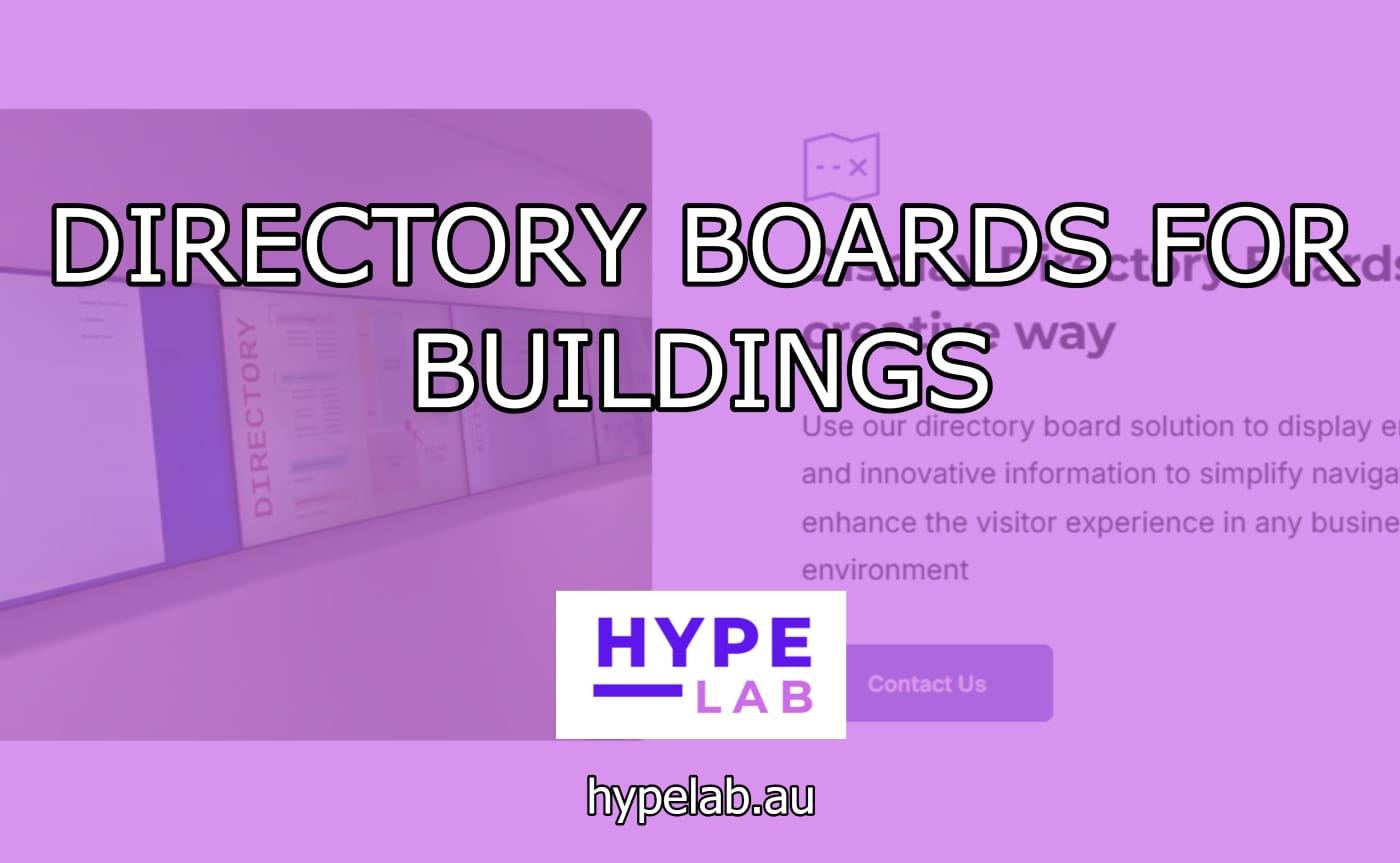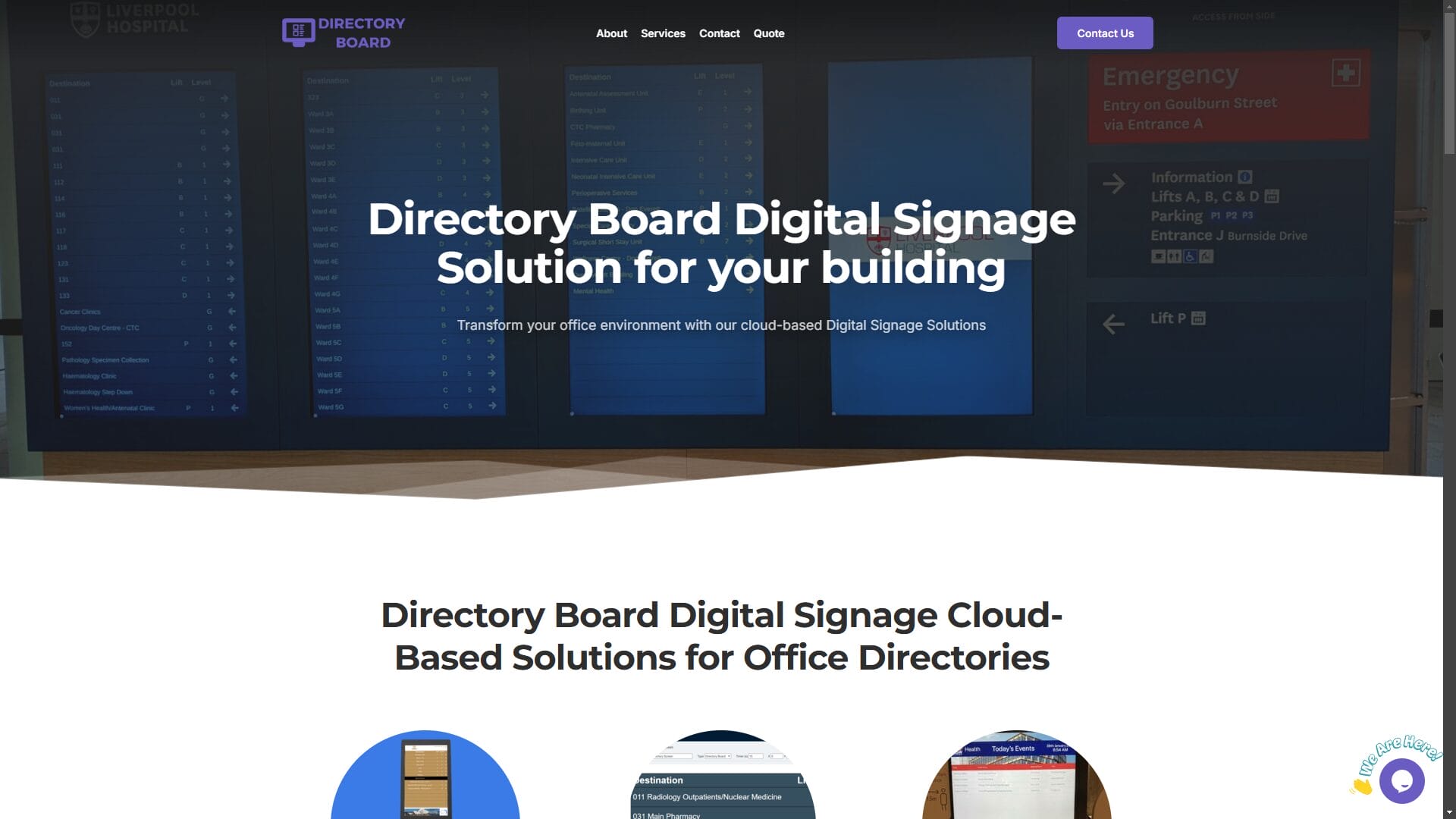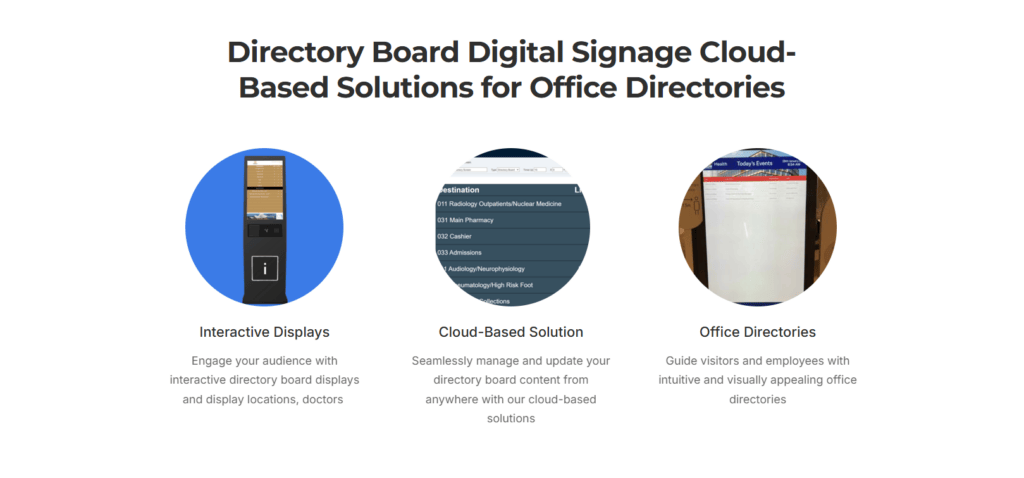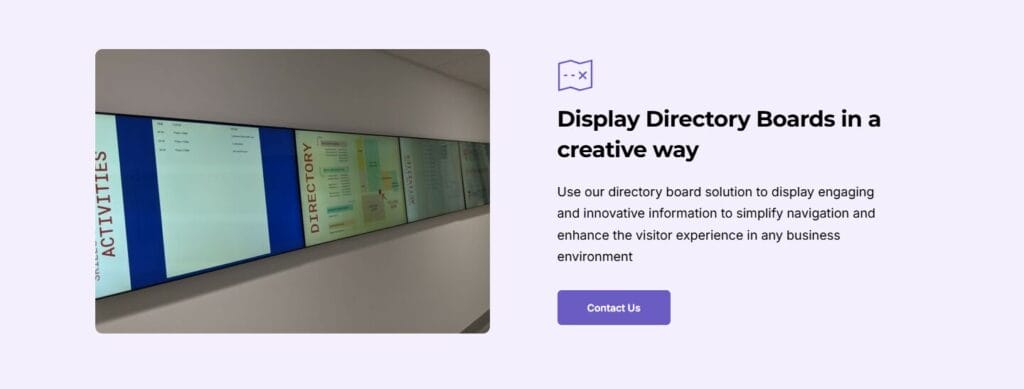
In the ever-evolving landscape of urban development and property management, the establishment of a well-organised directory board for buildings has emerged as a pivotal tool for enhancing communication and operational efficiency. This structured approach serves not only as a centralised hub for residents, tenants, and property management teams but also as a vital resource for streamlining decision-making processes and fostering a sense of community. By implementing a directory board, stakeholders can effectively share important information, address concerns, and promote collaborative initiatives that enhance the overall living and working environment. Whether in residential complexes, commercial properties, or mixed-use developments, a directory board provides clear visibility into building policies, emergency contacts, maintenance schedules, and upcoming events. Furthermore, it empowers residents and tenants to take an active role in the stewardship of their buildings, creating a culture of accountability and engagement. As property owners and managers increasingly recognise the significance of transparent communication and community involvement, the directory board stands out as an essential component in the toolkit for modern building management. This article will delve into the key features and benefits of implementing a directory board, offering insights and best practices for maximising its effectiveness in various building environments.


CONTACT US FOR DIRECTORY BOARD SOLUTION
Importance of a directory board
A directory board serves as a vital communication tool within a building, facilitating efficient navigation for both visitors and tenants. By providing clear and accessible information about the various occupants, services, and facilities offered, it enhances the overall experience of individuals entering the space. This organised presentation not only aids in reducing confusion but also reinforces a professional atmosphere, contributing to an image of cohesion and accessibility.
Moreover, a well-designed directory board reflects the identity and values of the building’s community. It offers an opportunity for tenants to showcase their presence and brand, fostering a sense of belonging. This visibility can enhance networking opportunities among tenants, encouraging collaboration and interaction within the space. Consequently, the directory board is an essential component that supports not only functionality but also community engagement and identity within the building.
Key components of directory boards
Essential elements of an effective directory board include clarity, organisation, and accessibility. The layout should be intuitive, allowing users to quickly locate the information they seek without unnecessary confusion. Utilising a hierarchical structure that categorises occupants or services improves user experience, while clear signage ensures that even first-time visitors can navigate the space with ease. Additionally, incorporating elements such as digital displays or interactive directories can further enhance accessibility, accommodating various user preferences and needs.
Design considerations are equally critical, as the aesthetics of the directory board should align with the overall branding and architectural style of the building. High-quality materials, legible fonts, and cohesive colour schemes contribute to a polished appearance that reinforces the building’s professional image. Furthermore, incorporating tactile or visually distinct features can aid individuals with disabilities, emphasising inclusivity. By combining these functional and design elements, directory boards can effectively serve a dual purpose: as informative tools and as integral components of the building’s identity.
Choosing the right board materials
in enhancing the overall functionality and durability of the directory board. Selecting materials that withstand environmental factors, such as moisture or UV exposure, is crucial for maintaining the board’s integrity over time. Options like acrylic, aluminum, or high-pressure laminate can offer both resilience and aesthetic appeal, ensuring the directory board remains an attractive and practical feature within the building.
Furthermore, the choice of materials should also consider the ease of updating information, particularly in dynamic environments where tenant turnover or service changes are frequent. Magnetic or changeable letter systems facilitate quick adjustments without compromising the board’s visual impact. Ultimately, the right materials will not only support the physical demands of the directory board but also enhance its role as a vital communication tool within the building.
Customising your directory board design
Tailoring the design of a directory board to align with the identity and functionality of the building can significantly enhance user experience. Consideration of font styles, colors, and layout is essential in ensuring that the directory board is both visually appealing and easy to navigate. A cohesive design that reflects the architectural style or branding of the building can create a seamless integration with the environment, making it a natural focal point for visitors.
In addition to aesthetic customisation, incorporating technology such as digital screens can offer dynamic content updates and improved accessibility features. This modern approach allows for real-time information dissemination, such as event notifications or emergency alerts, while also providing a platform for interactive maps or directories. Such innovations not only enhance the utility of the directory board but also position it as a modern asset in establishing effective communication within the building.
Directory boards for building navigation
h visitors and tenants. By integrating touch-screen technology, users can easily search for specific locations or services within the building, fostering a sense of autonomy in navigation. Additionally, these systems can be programmed to accommodate multiple languages, ensuring inclusivity for a diverse audience.
Moreover, the implementation of directory boards can significantly reduce the reliance on traditional signage, which may be less adaptable to changes in occupancy or layout. With the ability to update content remotely, building management can maintain accurate and relevant information, thus improving the overall efficiency of space utilisation. Ultimately, an effective directory board serves not only as a navigational aid but also as a communication tool that enhances the building’s operational efficiency and user satisfaction.
Maintaining and updating directory boards
Regular maintenance and timely updates of directory boards are essential to ensure that the information remains accurate and useful for users. This involves conducting routine checks to verify that all listings reflect current tenants and services, as well as visual inspections to identify any wear and tear or technological malfunctions. A systematic approach to maintenance can help prevent issues such as outdated information or malfunctioning displays, which could hinder effective navigation and diminish user experience.
In addition to routine maintenance, a proactive strategy for updating content is crucial. Building management should establish a clear protocol for incorporating changes as new tenants move in or existing tenants relocate. Utilising cloud-based solutions allows for swift updates, ensuring that users always have access to the most current information. By prioritising both maintenance and content management, the directory board can serve as a reliable resource that adapts to the evolving needs of the building and its occupants.
Legal requirements for directory signage
Compliance with local regulations is vital to ensure that directory signage adheres to established legal standards. These regulations often encompass guidelines related to size, placement, visibility, and accessibility, particularly for individuals with disabilities. Additionally, zoning laws may stipulate specific dimensions and design elements, which must be reviewed before installation to avoid potential fines or legal disputes.
Furthermore, building owners must consider any specific municipal codes that govern the use of signage within their jurisdiction. This may involve obtaining permits prior to installation and ensuring that the signage complies with aesthetic requirements set forth by local design review boards. By remaining informed and compliant with these legal requirements, property managers can mitigate risks and enhance the overall functionality and appeal of their directory signage.
Enhancing visibility with lighting options
Strategically incorporating lighting into directory signage can significantly improve visibility and enhance the overall user experience. Well-placed illumination not only highlights the directory itself but also ensures that it is easily readable at all times, regardless of ambient light conditions. Utilising LED lights, for instance, can provide energy-efficient options that cast a bright, clear glow, making signs stand out both day and night. Moreover, adjustable lighting features allow for the flexibility to modify brightness levels based on the time of day or specific events, further optimising visibility.
Additionally, integrating lighting with design elements like backlighting or halo effects can create a modern aesthetic while drawing attention to the signage. This combination not only aids in wayfinding but also adds a layer of sophistication to the building’s overall appearance. Ensuring that the lighting complements the directory’s design and aligns with the building’s architectural style is crucial for maintaining a cohesive look while effectively guiding visitors. By prioritising illumination within the signage strategy, building owners can enhance functionality and elevate the presence of their directory boards.

Creative directory board installation ideas
the building’s architecture can create a cohesive look that enhances both functionality and visual appeal. Consider utilising various materials and textures for the directory board frame, such as brushed metal, wood, or acrylic, which can be tailored to reflect the interior design of the space. This not only adds character but also allows for customisation that resonates with the building’s identity.
Moreover, incorporating interactive elements, such as touchscreen displays or QR codes, can transform a traditional directory into a more engaging experience. These features enable users to easily navigate through the information, search for specific tenants or services, and even access additional resources like maps or contact details. Emphasising user interaction creates a more dynamic environment, ensuring that the directory serves not only as a functional tool but as an integral part of the building’s atmosphere.

Benefits of digital directory boards
The implementation of digital directory boards streamlines information dissemination, ensuring that content can be easily updated in real-time to reflect changes in occupancy or services. This adaptability reduces the need for physical reprints, saving both time and resources while maintaining accurate information for visitors and tenants. Additionally, digital displays can showcase vibrant visuals, animations, or promotional content, enhancing the overall aesthetic of the space and making it more inviting.
Furthermore, digital directory boards can enhance user experience through features such as multi-language support, accessibility options, and integration with mobile applications. By catering to a diverse audience, these boards can improve navigation and ensure that all visitors feel welcomed and informed. The ability to analyse usage data also provides valuable insights that can inform future adjustments and upgrades, ultimately optimising the functionality of the directory.
In conclusion, the implementation of a directory board for buildings serves as an essential tool for enhancing navigation and communication within commercial and residential spaces. By providing clear, organised information about tenants and services, these boards not only improve the overall visitor experience but also contribute to a building’s professional image. As property owners and managers continue to prioritise convenience and accessibility, investing in an effective directory board system becomes increasingly vital. Ultimately, a well-designed directory board reflects a commitment to both functionality and aesthetics, ensuring that all occupants and visitors can navigate the space with ease and confidence.
FAQ
Sure! Here are five questions related to the topic of directory boards for buildings:
- What materials are commonly used for building directory boards?
- How can directory boards enhance wayfinding in large buildings?
- What design elements are important for effective directory boards?
- How often should directory boards be updated with new tenant information?
- What are the benefits of digital directory boards compared to traditional ones?
What is the primary purpose of a directory board in a commercial or residential building?
The primary purpose of a directory board in a commercial or residential building is to provide clear and accessible information about the occupants or tenants within the property. It typically displays the names of businesses or residents, along with their respective suite or apartment numbers, helping visitors easily locate their destinations. Additionally, directory boards can enhance the building’s professionalism and organisation, contributing to a positive impression for guests and clients.
What factors should be considered when designing a directory board to ensure it is user-friendly and accessible to all visitors?
When designing a directory board, consider factors such as clear typography and contrasting colours for readability, intuitive layout and logical categorisation for easy navigation, and appropriate font sizes for visibility. Ensure accessibility by including braille or tactile elements for visually impaired users and placing the board at a height accessible to all, including wheelchair users. Incorporate digital displays for dynamic information and provide multilingual options to accommodate diverse visitors. Finally, ensure good lighting and minimal glare for optimal visibility in various environments.
How can technology, such as digital displays or interactive screens, enhance the functionality of traditional directory boards in modern buildings?
Technology like digital displays and interactive screens can significantly enhance traditional directory boards by providing real-time updates, dynamic content, and user interactivity. Digital displays allow for instant information changes, showcasing events or modifications in building layouts. Interactive screens enable users to search for specific locations or services, offering personalised navigation assistance. Additionally, these technologies can integrate multimedia elements like maps, videos, and announcements, making the information more engaging and accessible. Overall, they improve user experience and streamline digital wayfinding in modern buildings.
What are the best practices for maintaining and updating the information displayed on a directory board to ensure accuracy and relevance?
Best practices for maintaining a directory board include regularly reviewing and updating content to reflect changes in personnel, departments, or services. Designate a responsible team or individual for oversight. Implement a routine schedule for updates, such as monthly or quarterly checks. Use clear, consistent formatting for easy reading. Encourage feedback from users to identify inaccuracies. Utilise digital platforms for real-time updates if possible. Ensure all information is verified before posting to maintain credibility, and consider user accessibility to enhance engagement.
In what ways can the design of a directory board reflect the branding and identity of the building or organisation it represents?
The design of a directory board can reflect branding and identity through its materials, colours, typography, and layout. Using the organisation’s signature colours reinforces brand recognition, while unique materials can convey a sense of luxury or modernity. Typography should align with the overall branding style, whether it’s professional, playful, or minimalist. Additionally, the layout can enhance usability and aesthetic appeal, reflecting the organisation’s values—such as innovation or tradition. Incorporating logos and consistent visual elements creates a cohesive identity, making the directory board not just functional, but also a key part of the building’s overall branding strategy.



 Previous Post
Previous Post